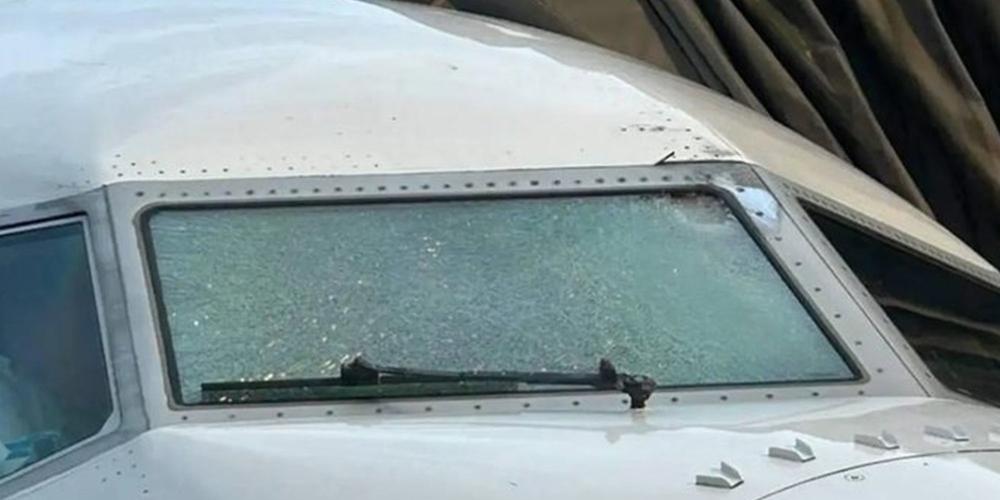Internet sleuths may have found evidence that it wasn’t space debris that hit a United Airlines flight last week, but a weather balloon. A WindBorne balloon, to be precise, seemed to be the culprit, and the company itself supported that theory with its own report.
Featured VideoThe likelihood of anything hitting a plane at cruising altitude is very low, but not impossible. Thankfully, there were no fatalities this time.
Was space debris involved in the United Airlines flight collision?
Speculation swirled over the weekend about what hit a United Airlines flight last week, with many jumping to blame space debris. The object smashed the windshield, injuring the pilot and forcing an emergency landing in Utah. Everyone else landed without a scratch, and the pilot was treated for cuts along his arm from the broken glass.
AdvertisementThe plane was cruising at 36,000 feet when it happened—far above any birds or typical objects of concern. This high altitude fueled theories that the culprit was a meteorite or some other space debris, but according to a 2023 report from the Federal Aviation Administration (FAA), the odds of that happening are about one trillion to one.
Aviation fans and mystery lovers got to work online to help solve the case. On Monday, X user @vk5qi proposed the culprit as a WindBorne balloon after noting the time and position one of them suddenly stopped reporting data.
Advertisement“There was a WindBorne systems balloon right around that area, at the right altitude, at the time,” he pointed out. “It stopped reporting right at 12:36Z. Those are about 1kg in mass. Last position was 38.5314, -109.416, at 10953m altitude.”
By that evening, WindBorne was supporting the theory.
“I think this was a WindBorne balloon”
As support for the weather balloon idea grew, Ars Technica published a report Monday evening with confirmation from a WindBorne representative that the mystery object was quite likely one of their balloons.
Advertisement“I think this was a WindBorne balloon,” said company co-founder Kai Marshland. “We learned about UA1093 and the potential that it was related to one of our balloons at 11 pm PT on Sunday and immediately looked into it. At 6 am PT, we sent our preliminary investigation to both NTSB and FAA, and are working with both of them to investigate further.”
On the same day, WindBorne released a general statement saying they had been investigating the possibility that one of their weather monitoring devices was to blame since Sunday. They said that they sent their preliminary investigation results to the FAA and the National Transportation Safety Board (NTSB) on Monday.
They further stressed that they design their balloons to be lightweight to minimize damage done in a rare collision like this. Now that the unlikely event has come to pass, they promised to increase safety measures.
“We immediately rolled out changes to minimize time spent between 30,000 and 40,000 feet. These changes are already live with immediate effect. Additionally, we are further accelerating our plans to use live flight data to autonomously avoid planes, even if the planes are at a non-standard altitude.”
Advertisement“We are also actively working on new hardware designs to further reduce impact force magnitude and concentration.”

 It’s troll vs. troll in Netflix’s Trolls trailer
It’s troll vs. troll in Netflix’s Trolls trailer